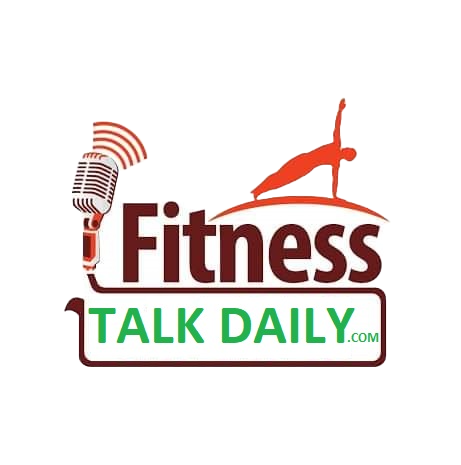Fasted cardio is a popular workout method where you exercise on an empty stomach, typically first thing in the morning before having breakfast. But what makes it so effective? Many fitness enthusiasts swear by it, claiming that it helps burn fat faster and improve endurance. In this article, we will dive into the benefits of fasted cardio and answer all your questions about this type of workout. We’ll explore how it works, its advantages, potential drawbacks, and tips on how to safely incorporate it into your fitness routine.
What Is Fasted Cardio?
Fasted cardio refers to doing cardiovascular exercise, such as running, cycling, or walking, without having consumed any food beforehand. The idea is that when you work out on an empty stomach, your body will rely more on fat stores for energy, as glycogen (from carbohydrates) levels are low. Fasted cardio is typically performed in the morning after a night’s sleep when the body has already gone several hours without food.
Many athletes and individuals aiming for fat loss prefer fasted cardio because it is believed to help burn fat more efficiently. However, its effectiveness depends on several factors, including the intensity and duration of the workout.
How Does Fasted Cardio Work?
When you perform fasted cardio, your body taps into stored fat as its primary energy source because glycogen reserves are depleted. Since glycogen is the body’s preferred energy source during exercise, its low levels in the morning after fasting force the body to burn fat for fuel instead.
This makes fasted cardio a popular choice for those who want to maximize fat burning. However, it’s important to understand that while fat-burning may be increased in the short term, the long-term benefits are still a topic of ongoing research. Additionally, fasting cardio might not be the best choice for everyone, especially those who feel sluggish or lightheaded when exercising on an empty stomach.
Key Benefits of Fasted Cardio
Fasted cardio is often praised for its many benefits for fitness and fat loss. Let’s break down some of the top advantages of this type of workout:
3.1 Boosts Fat Burning
The most significant benefit of fasted cardio is the potential to burn fat more efficiently. With depleted glycogen stores in the body, the body turns to fat as its primary energy source, which may lead to a higher rate of fat oxidation.
| Benefit | How It Helps |
|---|---|
| Fat Loss | By relying on fat for energy, you burn more fat during the workout. |
| Increased Fat Oxidation | Fasted cardio may increase fat oxidation after the workout, leading to further fat loss. |
3.2 Improves Endurance
Since fasted cardio relies on fat for fuel, it trains the body to use fat more efficiently as a source of energy. Over time, this can help improve endurance levels, allowing you to perform longer workouts at higher intensities.
3.3 Enhances Insulin Sensitivity
Fasted cardio may also improve insulin sensitivity, which is crucial for overall health and weight management. By exercising in a fasted state, your body may become more efficient at using insulin, reducing the risk of insulin resistance and type 2 diabetes.
3.4 Increases Metabolism
Regular fasted cardio sessions can increase your metabolism, helping you burn more calories even after your workout has ended. This post-exercise calorie burn is known as excess post-exercise oxygen consumption (EPOC), which can be amplified by fasted workouts.
Drawbacks and Risks of Fasted Cardio
While fasted cardio offers numerous benefits, it may not be suitable for everyone. There are a few potential risks and drawbacks to keep in mind:
- Reduced Performance: Some people may find that they have less energy during their workout when performing it on an empty stomach, especially if the workout is high-intensity.
- Muscle Loss: Extended fasted cardio sessions without proper nutrition afterward can lead to muscle breakdown as the body may also break down protein for energy.
- Hypoglycemia: Low blood sugar levels can occur if you push yourself too hard during fasted cardio, leading to dizziness, fatigue, and weakness.
To mitigate these risks, it’s important to listen to your body and avoid pushing yourself too hard when performing fasted cardio.
How to Do Fasted Cardio Safely
To reap the benefits of fasted cardio while minimizing the risks, follow these tips:
- Start Slow: If you’re new to fasted cardio, start with low-to-moderate intensity workouts, such as walking or light jogging, before attempting high-intensity exercises.
- Stay Hydrated: Drink plenty of water before, during, and after your workout to prevent dehydration.
- Time Your Nutrition: After completing a fasted cardio workout, make sure to refuel with a balanced meal that includes protein and carbohydrates to support muscle recovery and prevent muscle loss.
- Avoid Intense Workouts: If you’re doing a high-intensity workout like HIIT (High-Intensity Interval Training), it may be best to have a small snack beforehand to provide extra energy.
Fasted Cardio
Fasted cardio can be a great tool for fat burning and improving overall fitness if done correctly. By understanding the benefits of fasted cardio, such as increased fat burning, improved endurance, and better insulin sensitivity, you can incorporate it into your workout routine to enhance your results. However, it’s important to be mindful of the potential risks, such as reduced performance and muscle loss, and to make adjustments as necessary.
If you’re new to fasted cardio, start with low-intensity sessions and gradually increase the intensity as your body adapts. Always listen to your body, stay hydrated, and prioritize proper post-workout nutrition.




